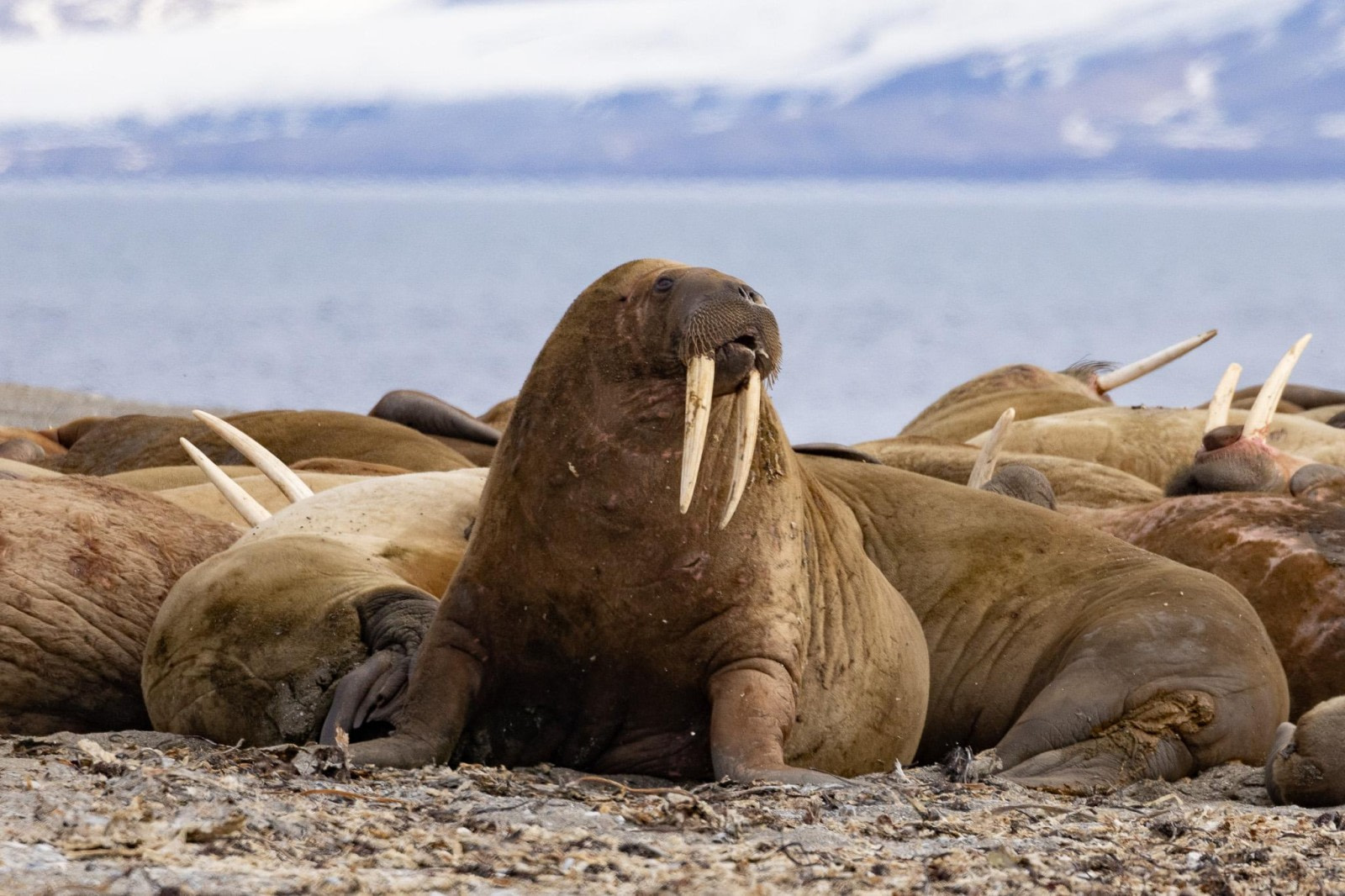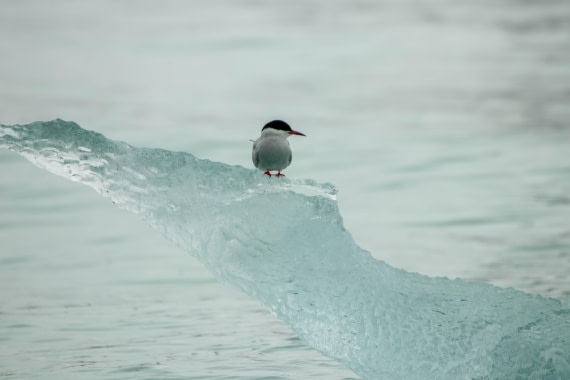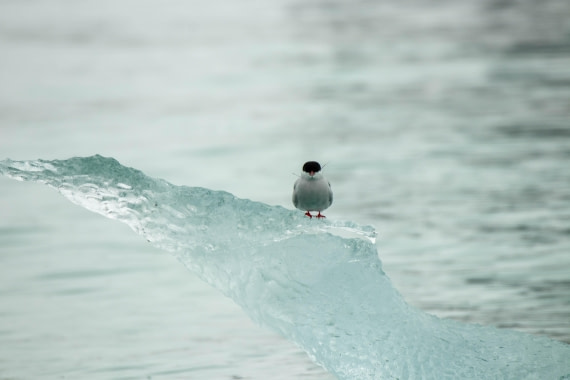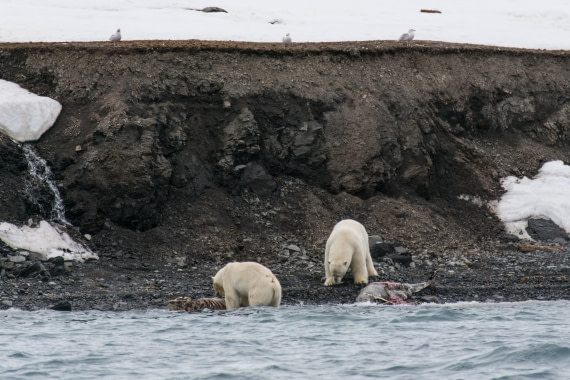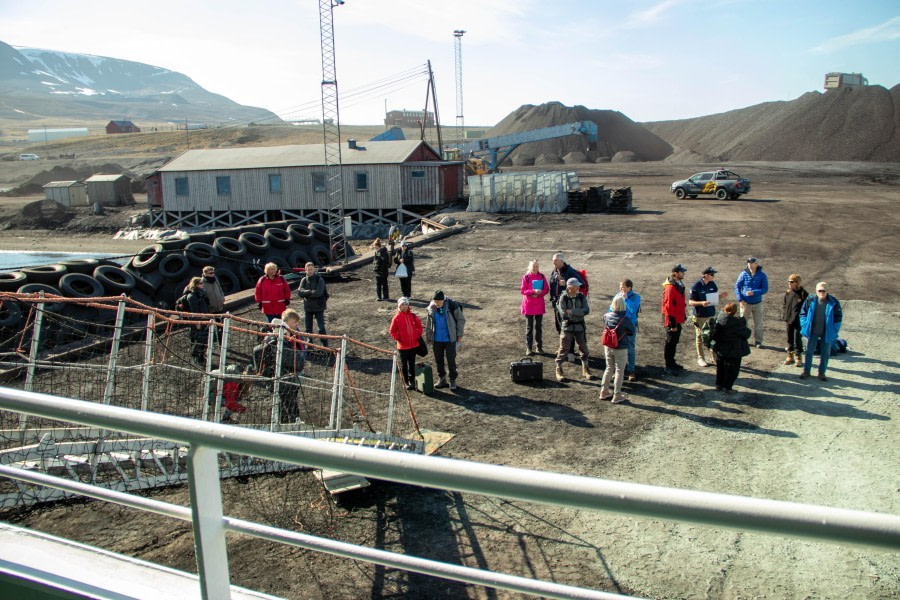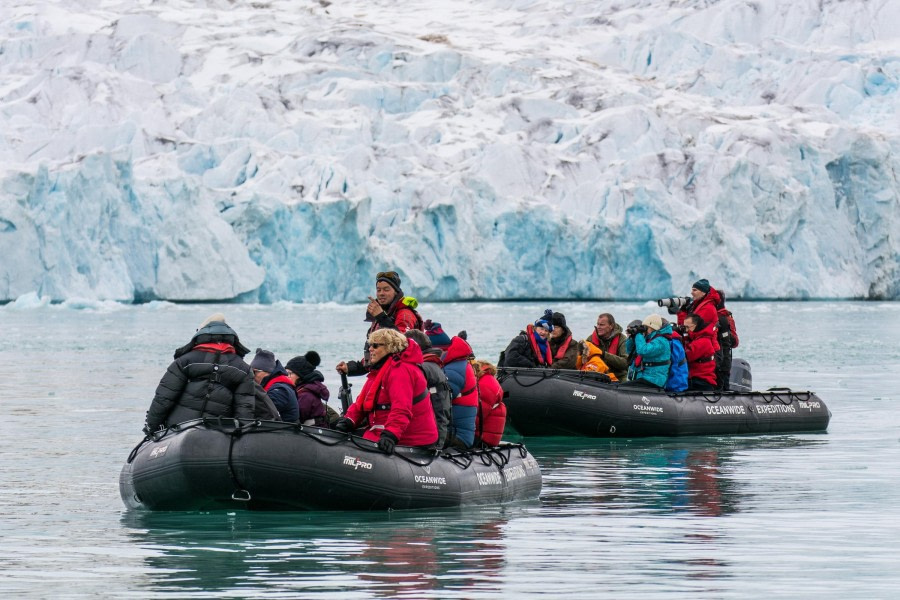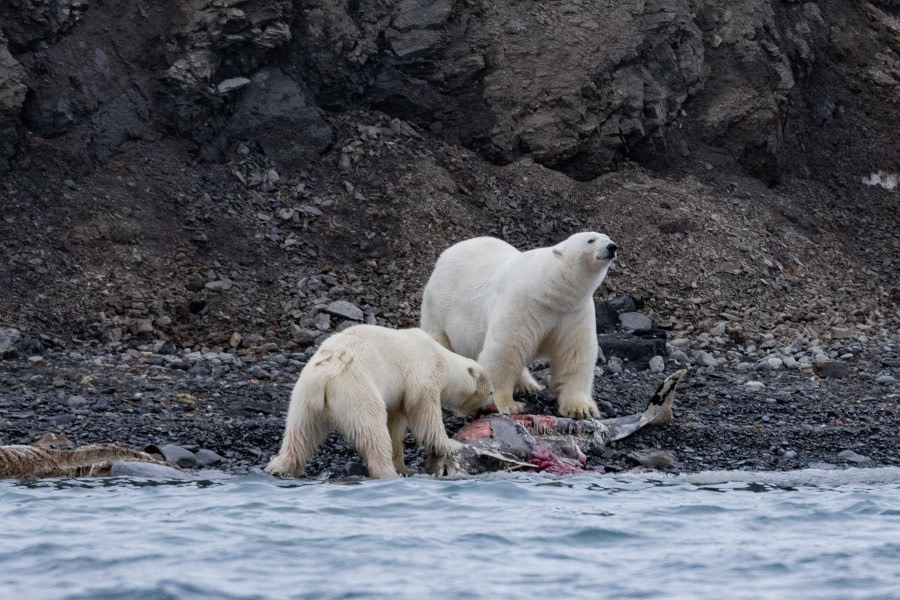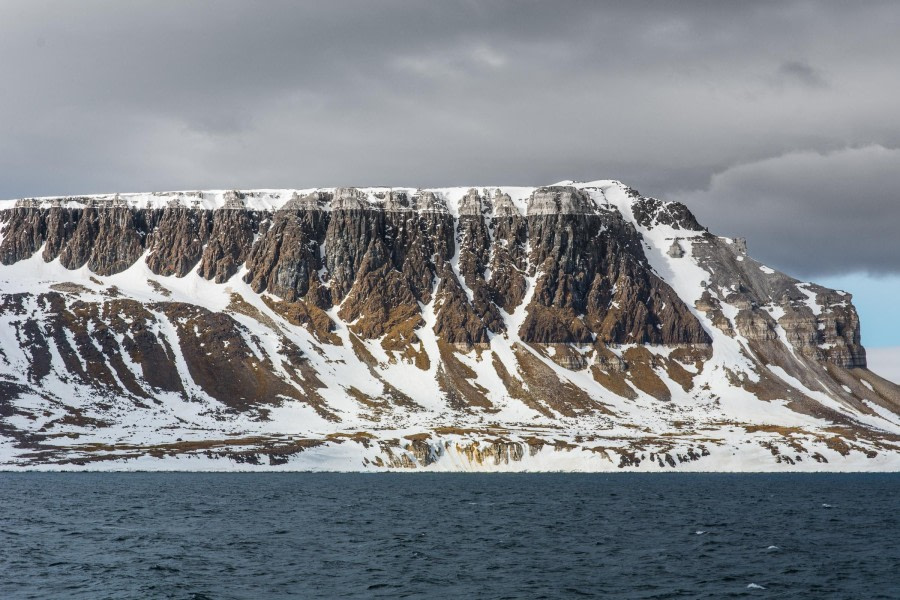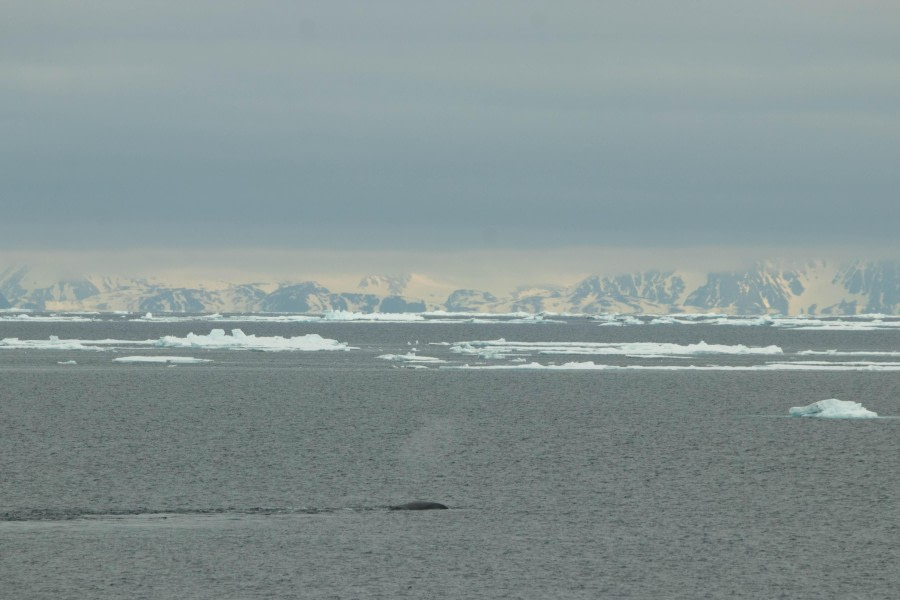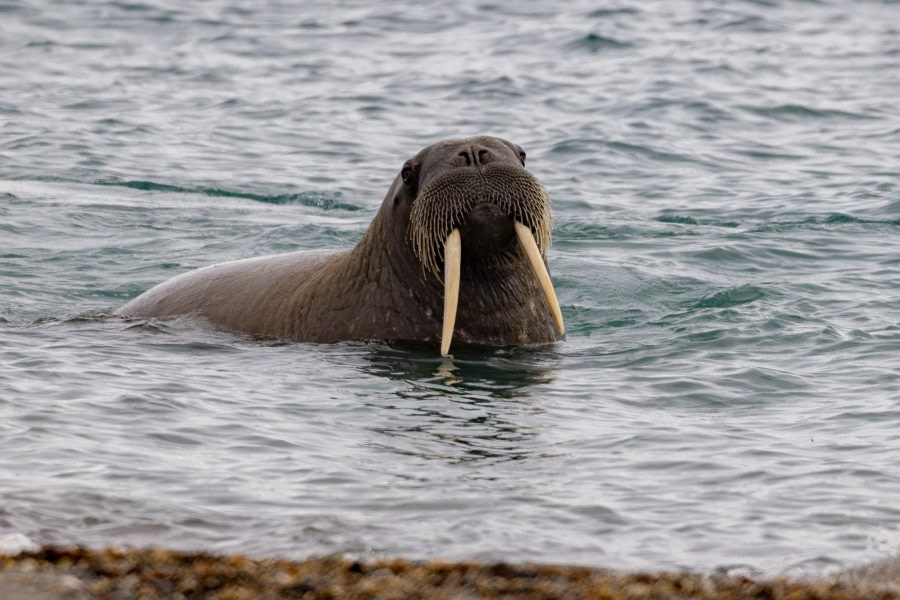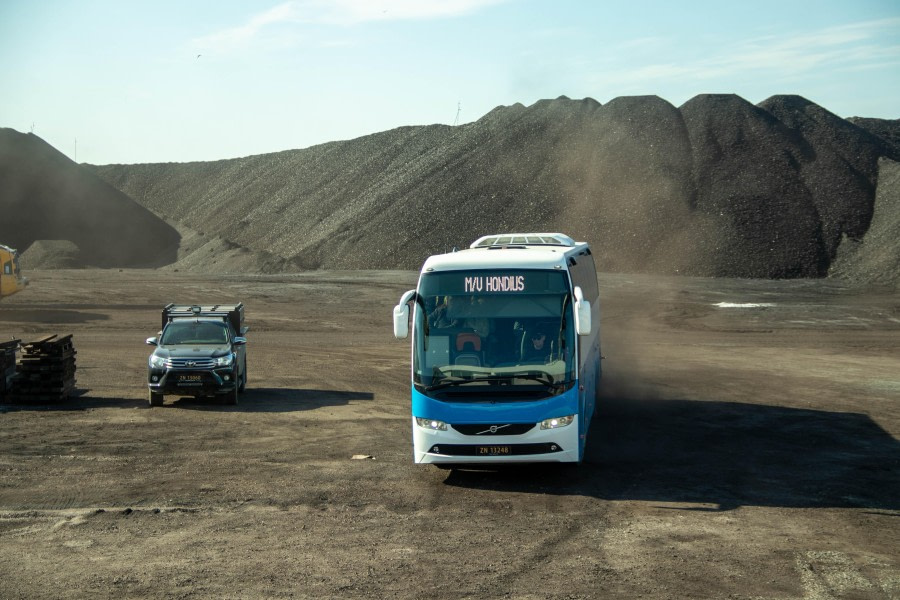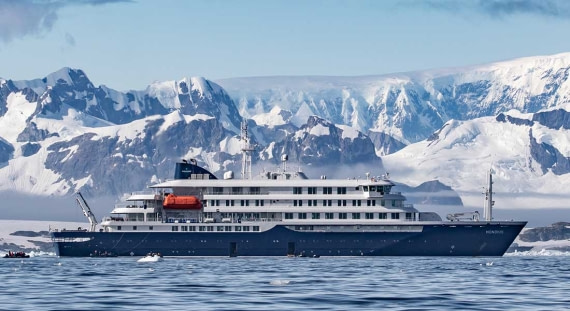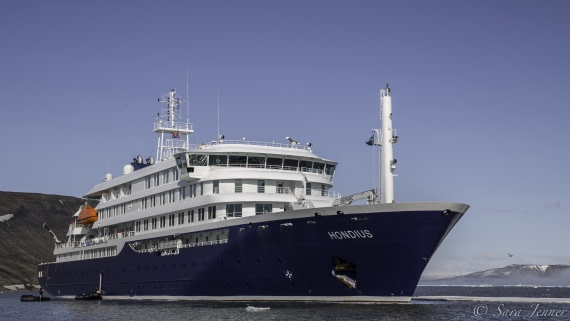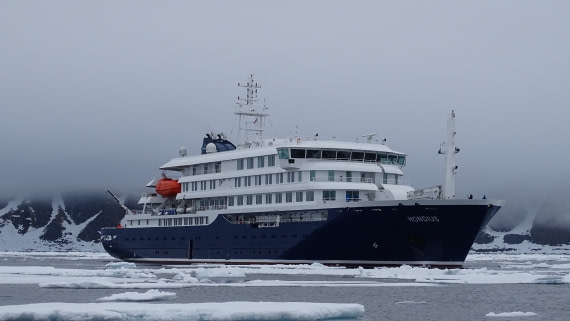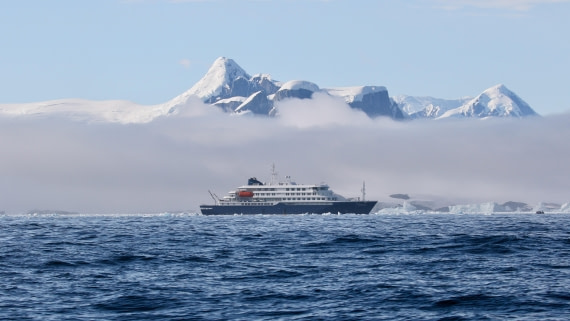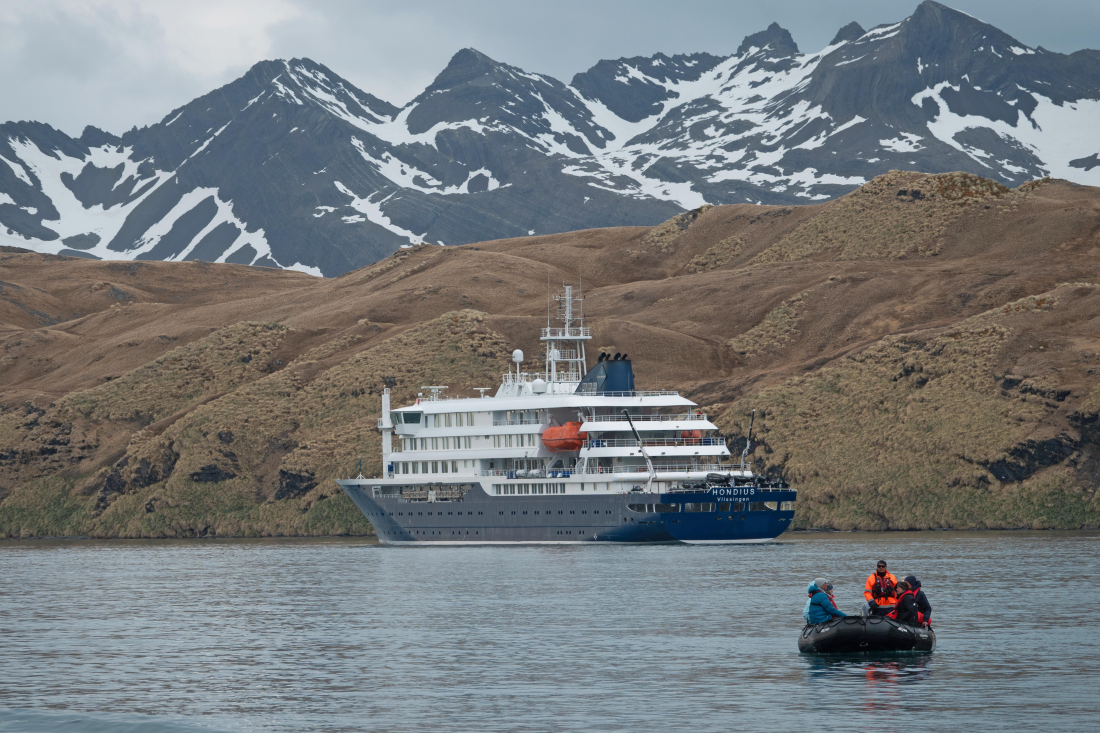| Datum: |
14.06.2024 |
| Positie: |
79° 53.1’ N 017° 42.2’ E |
| Wind: |
W5 |
| Weer: |
Overcast |
| Luchttemperatuur: |
0 |
Hondius sailed through the night to the northwestern side of Svalbard, anchoring in the Hinlopen Strait for our morning exploration of the Alkefjellet cliffs. Despite the wind picking up, our excitement for the Zodiac cruise past these magnificent bird cliffs was palpable. The dramatic dolerite cliffs of Alkefjellet rise 150 meters straight from the sea, teeming with seabirds like Brünnich’s Guillemots and Black Guillemots, creating a spectacular sight.
After breakfast, the wind and swell had intensified. The expedition team ventured out with two Zodiacs to assess the conditions, navigating high waves and getting splashed in the process. With waves crashing against the gangway, Expedition Leader Jerry decided it was safer to sail Hondius past the bird cliffs. As Captain Arthur sailed Hondius by, we enjoyed breathtaking views of the geology and thousands of birds perched on the cliffs, using telescopes to get close-up looks that brought big smiles to our faces.
Continuing our journey, Hondius set sail for the next destination while Laurence gave an enlightening lecture on glaciology. He explained that Svalbard is a natural laboratory for glaciology, with 59% of the archipelago covered in ice, featuring different types of glaciers and ice caps. We learned that the oldest ice on Earth is in Antarctica, over 2 million years old, while the youngest ice is just 20 years old on Mount St. Helens. Listening to Laurence explanation of the melting of the ice that by 2100 the sea level has risen with more than 50 meters. It made us realize that our grandchildren will not experience the Arctic as we see it today and have to adapt to a new reality.
For lunch, Head Chef Ralf and his galley team prepared a mouthwatering meal with options for every taste. As we sailed towards our afternoon destination, Sorgfjorden, the wind picked up and a bit of fog rolled in. The expedition team diligently scanned the horizon for bears. Once it was safe, we received the green light to go outside for our afternoon activities, which included a split landing and Zodiac cruise.
Eolusneset, still covered in snow, provided amazing views and historical landmarks. We hiked up to a lookout where a tall cross stands, raised in 1855 by skipper C. Holmgren in memory of fallen whalers. Contrary to earlier beliefs, the graves in the area were not related to a sea battle in Sorgfjorden but were instead a cemetery for 17th and 18th-century whalers. This fascinating history added depth to our adventure as we explored the area.
During the Zodiac cruise, our guides led us through Sorgfjorden, where we marvelled at the mountains and spotted reindeer and purple sandpipers along the shoreline. Onshore, near the whalers’ graves, we were delighted to see an Arctic fox, still in its winter fur with a bit of its summer coat showing. This curious fox made sure to check out all the new visitors to its territory, and we all stood in awe of this Arctic treasure.
The evening concluded with our daily recap, where Expedition Leader Jerry shared plans for the next day. Marco provided insights on the geology of Alkefjellet, and Meike discussed the life cycle of the Brünnich’s Guillemots that breed on the cliffs. This informative session rounded off a day filled with exploration and learning.
We ended the day with a delicious dinner prepared by Chef Ralf and the legendary chocolate cake for dessert, ready to sleep well after a day full of adventure, eagerly anticipating what tomorrow would bring.
